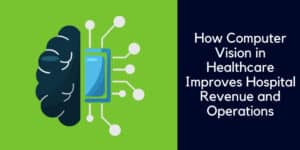What’s inside:
- Delayed patient bill drop time leads to revenue leakage, increased claim denials, and disrupted cash flow in hospitals.
- Inefficient charge capture, including manual documentation errors, missing supply records, and outdated barcode scanning methods.
- The Solution: Snap&Go AI-Powered Automation – Captures charge data instantly via camera and computer vision technology.
Delayed patient bill drop time—the period between service delivery and billing—causes significant financial and operational setbacks for healthcare providers. One of the biggest contributors to this issue is inefficient charge capture, where missing or inaccurate documentation leads to revenue leakage, increased claim denials, and disrupted cash flow.
Ever had a nurse forget to scan an implant barcode? What about a supply that was used but never recorded? These small mistakes add up to millions in lost revenue—but with Snap&Go’s AI-powered camera automation, every charge capture is done instantly, in real time. According to the American Hospital Association, hospitals in Q1 2024 faced a 16.5% to 17.9% revenue gap due to billing inefficiencies and delays. Another industry survey found that 40% of revenue cycle professionals identified incomplete physician documentation as a primary cause of billing delays.
So yes, to demonstrate a healthy revenue cycle management process, hospitals must start by evaluating their charge capture process. How is it done today? Is it truly optimized? Can I fully trust the current system?

The Cost of Poor Charge Capture
Poor charge capture has a direct impact on a hospital’s financial health, compliance, and operational efficiency. When high-cost implants are not accurately documented at the point of care, it results in revenue leakage, higher claim denials, and inefficiencies that burden hospital staff.
1. Revenue Leakage and Lost Charges
Hospitals and surgical centers rely on charge capture to bill accurately for procedures, supplies, and high-value implants. A lack of real-time documentation often leads to missed charges, especially for high-cost surgical implants, which can be thousands of dollars per item. A 2023 study found that hospitals lose an estimated $4.8 million annually due to unbilled procedures and missing charges related to surgical implants and high-cost medications.
2. Higher Claim Denial Rates
Incomplete or incorrect documentation is a primary reason for insurance claim denials. Without proper charge capture, hospitals risk submitting claims with missing details, leading to denials, delayed reimbursements, or costly appeals. According to the American Medical Association (AMA), the average claim denial rate for hospitals is between 10% and 20%, and nearly 86% of denials are preventable—many linked to missing or incorrect charge capture.
3. Increased Administrative Work and Manual Rework
Have you ever tried counting how many pending patient billings your OR has? When teams must manually fill in missing charges, it increases the administrative workload and slows down the revenue cycle. In many cases, staff must manually verify supply usage, add missing information, and resubmit claims—wasting valuable time that could be spent on higher-value tasks. One large U.S. hospital reported that 25% of its revenue cycle team’s time was spent identifying and correcting missing or inaccurate charge capture data, adding weeks to the billing process.
4. Disrupted Cash Flow and Increased Days in A/R
A critical metric in hospital revenue cycle management is Accounts Receivable (AR) days—the average number of days it takes a hospital or medical facility to collect outstanding payments. The longer the AR days, the slower the revenue cycle, which directly impacts financial health. Efficient charge capture plays a pivotal role in keeping AR days low by ensuring accurate and timely documentation of medical services and supplies. Hospitals with poor charge capture processes experience an average Days in A/R of 50+ days, while those using automated charge capture solutions see improvements to 30 days or less.

Why Same-Day Charging Is Essential & How Snap&Go Makes It Possible
One of the most effective ways to reduce patient bill drop time and avoid revenue loss is by ensuring same-day charge capture. When hospitals bill for services and supplies on the same day they are used, they significantly improve revenue cycle efficiency and financial performance.
However, achieving same-day charging is impossible with manual documentation and outdated barcode scanning methods, which are prone to human error and often delay billing. The solution? AI-powered automation with Snap&Go.
Snap&Go revolutionizes charge capture by automating the documentation of high-cost implants at the point of use using advanced AI-powered cameras and computer vision technology. Unlike traditional manual data entry, Snap&Go leverages image recognition and machine learning algorithms to instantly capture and log every supply used in a procedure, ensuring real-time billing accuracy.
How Snap&Go Optimizes Charge Capture for Same-Day Charging:
Efficiency & Workflow Optimization
- Instant Documentation: A 3-second image capture records every implant and supply used in surgery, eliminating time-consuming manual entry.
- Seamless EHR Integration: Works with EPIC and other major EHRs, ensuring real-time data flows directly into billing systems. (identimedical.com)
- Faster Bill Drop Time: Ensures that all supplies and procedures are documented and billed within 24 hours, significantly reducing Days in A/R and improving cash flow.
Accuracy & Error Reduction
- Elimination of Manual Errors: AI-powered automation ensures every charge is captured accurately, reducing claim denials and lost revenue.
- Charge Capture Consistency: Prevents missing or duplicate charges by automating supply documentation at the point of use.
- Minimized Staff Burden: Reduces administrative workload for revenue cycle teams, allowing them to focus on higher-value tasks instead of reconciling missing charges.
Compliance & Financial Security
- Regulatory Compliance: Snap&Go ensures hospitals meet CMS, FDA UDI, and payer documentation requirements, preventing billing errors and compliance risks.
- Audit Readiness: Provides clear, traceable records of charge capture, helping hospitals pass audits and avoid financial penalties.
Proven Impact: Faster Reimbursements & Higher Revenue
Hospitals using Snap&Go for same-day charge capture report:
- 40% Reduction in Billing Cycle Time: Faster bill drop time leads to quicker insurance payments.
- 30% Faster Reimbursements: Reduced Days in A/R, improving hospital cash flow.
- 22% Decrease in Claim Denials: Clean, complete documentation ensures higher claim approval rates.
Hospitals can no longer afford outdated, manual charge capture methods. Implementing Snap&Go means improved accuracy, streamlined workflows, and faster financial recovery. With millions of dollars at stake, hospitals must rethink how they approach charge capture and billing efficiency. Same-day charge capture is no longer a luxury—it’s a necessity for reducing patient bill drop time, increasing revenue, and streamlining operations.
AI-driven automation with Snap&Go ensures that hospitals can eliminate errors, accelerate reimbursements, and optimize revenue cycle performance.






